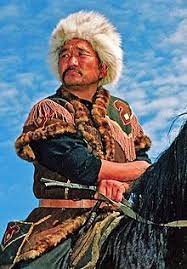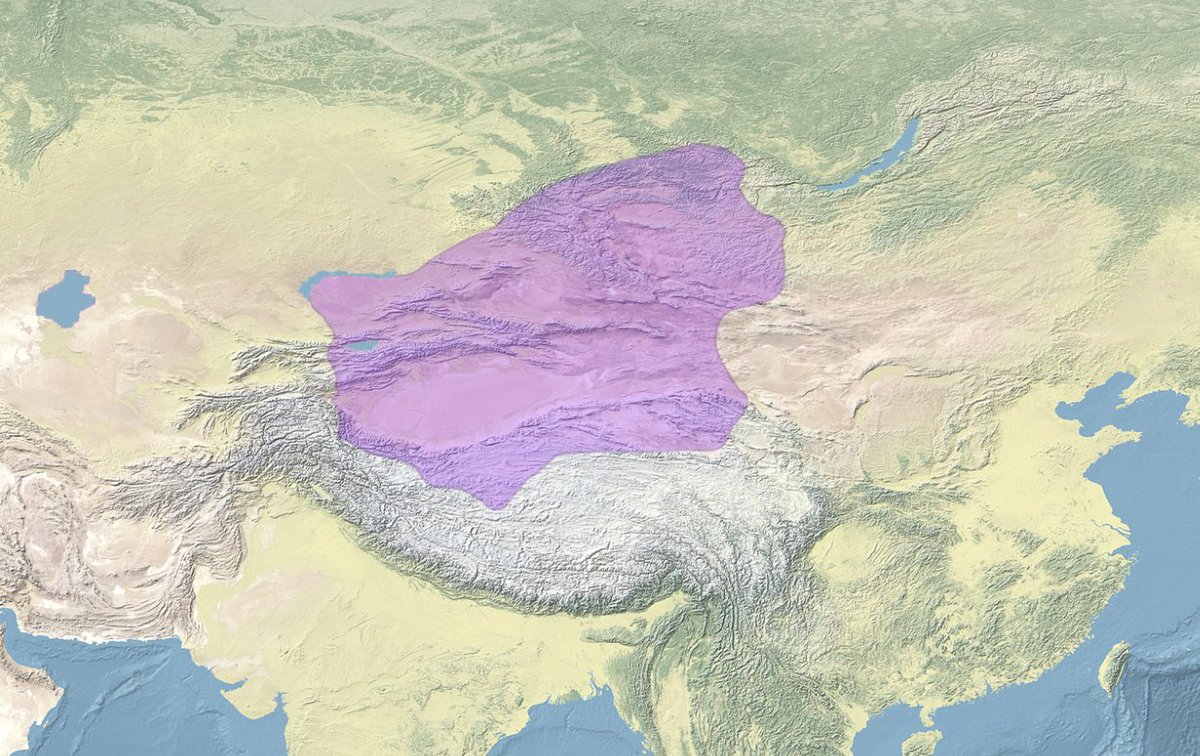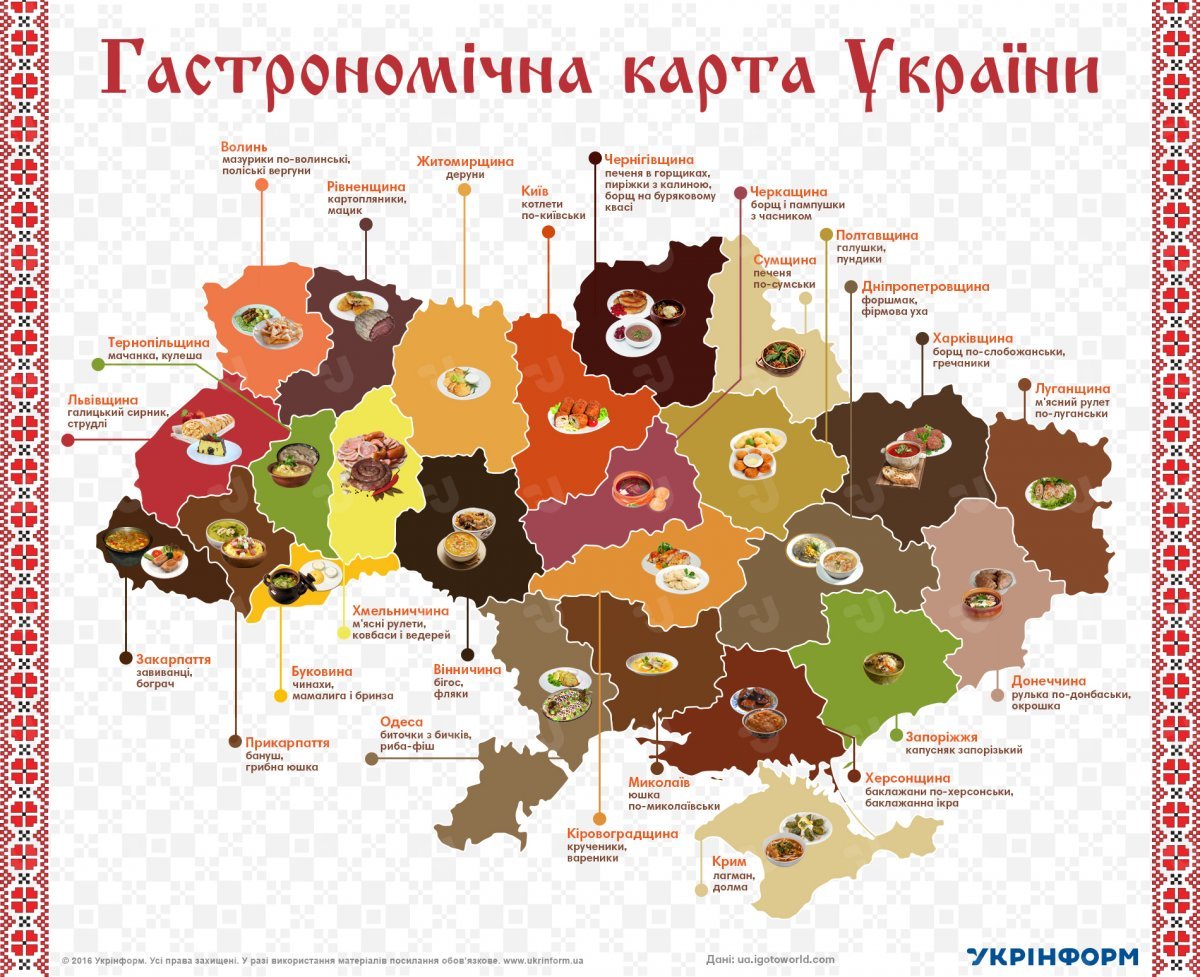THREAD Altai Republic. #RussiaDecolonized
Today, we will explore the potential for the independence of Altai Republic.
Today, we will explore the potential for the independence of Altai Republic.

The Altai people, a group within the Turkic ethnic families, have their origins in this region. This area was pivotal in the early Turkic Khaganate history around the 6th century. /1






Traditionally, the Altai people led nomadic or semi-nomadic lives, with a foundation in shamanism. In the early 20th century, Burkhanism, a unique ethnic religion combining elements of pre-shamanistic beliefs, shamanism, Buddhism, and Christianity, emerged. /2 

Due to its strategic significance, the Altai region became part of several historical states, including the Oirat Khanate, Mongol Empire, Naiman State, and Yuan Empire. /3
The Dzungar Khanate's control until the mid-17th century prompted Russian expansion into the area, notably with the establishment of the Biysk fortress, among others, in what is now the Altai Republic. /4




The period under the Dzungar Khanate and subsequent threats from the Yuan Empire marked further integration into the Russian Empire. /5
In the 19th century, the Altai mountain area was renowned for metal mining, which saw a decline after the end of serfdom, leading to a focus on agriculture. /6
During the civil war, there was an attempt to establish an independent Altai. This movement centered around the Burkhanist religion, with Altai painter Grigory Gurkin playing a pivotal role. /7




The goal also included uniting nearby nations into a Confederated Republic of Altai. Despite brief de facto independence amidst chaos, the region faced invasions by the White Army followed by the Red Army, leading to prolonged control by the latter. /8
Subsequent administrative changes after the civil war resulted in the region's inclusion in Altai Krai in 1948 as the Mountain Altai Autonomous Region. /9 

In 1991, Altai AO was renamed the Altai Republic. Within the Russian Federation, Altai has emerged as a prominent domestic tourist destination, celebrated for its natural beauty but facing challenges of lower living standards for its residents. /10






GEOPRAPHY
The Altai Republic, nestled in Central Siberia's mountains, is frequently referred to as "Gornyi Altai" (Mountainous Altai) in Russia. This distinction helps differentiate it from Altai Krai, another federal subject. /11
The Altai Republic, nestled in Central Siberia's mountains, is frequently referred to as "Gornyi Altai" (Mountainous Altai) in Russia. This distinction helps differentiate it from Altai Krai, another federal subject. /11
Despite its relatively small size of 92,000 square kilometers compared to other Siberian regions, the Altai Republic is roughly the size of Portugal, offering a European perspective on its scale. Altai Republic experiences long, cold winters and brief, mild summers. /12 

The region lacks railway infrastructure, a common issue in remote Siberia, coupled with poor road conditions. Gasification is minimal across most of the Altai Republic, though future plans include constructing a pipeline directly to China, potentially altering this status. /13 

Notably, the Altai Republic shares borders with three distinct countries: Kazakhstan, China, and Mongolia. Mountainous terrain restricts connections, with a few roads leading to Mongolia and Kazakhstan but no direct route to China. /14
ECONOMY
In terms of GDP rankings for Russian regions, Altai is usually near the bottom. It's an agricultural region where reindeer herding and horse breeding are traditional industries. It also has some mining, including ore extraction and non-ferrous metallurgy. /15


In terms of GDP rankings for Russian regions, Altai is usually near the bottom. It's an agricultural region where reindeer herding and horse breeding are traditional industries. It also has some mining, including ore extraction and non-ferrous metallurgy. /15


The main sources of income include tourism, which has seen significant growth over the past 20 years. This boom has made tourism a crucial part of the economy, leading to the construction of hotels and other infrastructure. /16
Interestingly, a significant portion of the region’s energy comes from solar panels. Altai has strong potential for renewable energy development. /17 

POPULATION
The republic has a small population of around 200,000. Altai people make up about 37% of the total. While they don't form a majority, their numbers have been steadily increasing. /18
The republic has a small population of around 200,000. Altai people make up about 37% of the total. While they don't form a majority, their numbers have been steadily increasing. /18

Altai boasts stunning natural landscapes and a mild climate by Siberian standards. This could attract visitors or even new residents from nearby regions. /19 

Altaians are generally proud of their culture and religion, with most actively practicing it. However, some Christian traditions have also been integrated into their daily lives. /20 

According to Russian data, there are 68,000 Altai speakers. UNESCO classifies Northern Altai as severely endangered and Southern Altai as definitely endangered languages. /21
FREEDOM MOVEMENTS
There haven't been many freedom movements recently, but several events are worth noting.
In 2005, the Kremlin merged several regions and dissolved autonomous okrugs to reduce local autonomy. /22
There haven't been many freedom movements recently, but several events are worth noting.
In 2005, the Kremlin merged several regions and dissolved autonomous okrugs to reduce local autonomy. /22
One proposal was to unite the Altai Republic with Altai Krai, but it never materialized. Local elites strongly opposed the idea, and it was highly unpopular among the public. /23
The newspaper Listok was once the region's largest. Known for its criticism of the government, it faced severe pressure starting in 2014, including fines and the blocking of its website. /24
In August 2024, Listok's founder Sergei Mikhailov was sentenced to 8 years in prison for speaking out about crimes in Bucha. The editor-in-chief, Viktor Rau, left Russia in recent years, and the newspaper is now nearly defunct. /25 

Another controversial issue involves the proposed construction of a gas pipeline to China through the Ukok Plateau, a sacred and ecologically important area for Altai minorities. /26 

While the Altai Republic government recognized the plateau's sacred status in June 2012 to prevent industrial development, the pipeline plans persist. /27 

Several smaller organizations have also been persecuted by the Kremlin under extremism charges. However, their main goals were religious freedom and the promotion of smaller faiths. /28
CONCLUSION
The Altai Republic lacks major figures or large organizations, and many groups have been divided, leading to a lack of unity. /29
The Altai Republic lacks major figures or large organizations, and many groups have been divided, leading to a lack of unity. /29
However, the fact that the region's most popular media outlet until 2022 was critical of the Kremlin is notable. There are still activists and intellectuals in the region who have managed to achieve small successes in dealing with the Kremlin. /30
Overall, the future remains uncertain. Since the 1990s, there has been significant development in Altai culture and traditions, but it’s unclear where this will ultimately lead. /31 

Thank you for reading and consider to support the project by buying me a coffee. Likes, retweets, and comments are also helpful. Thank you for your support!
/32buymeacoffee.com/VTretyak
/32buymeacoffee.com/VTretyak
• • •
Missing some Tweet in this thread? You can try to
force a refresh























